Beyond the ‘country club city’ and ‘playground of presidents’: Rancho Mirage is turning 50
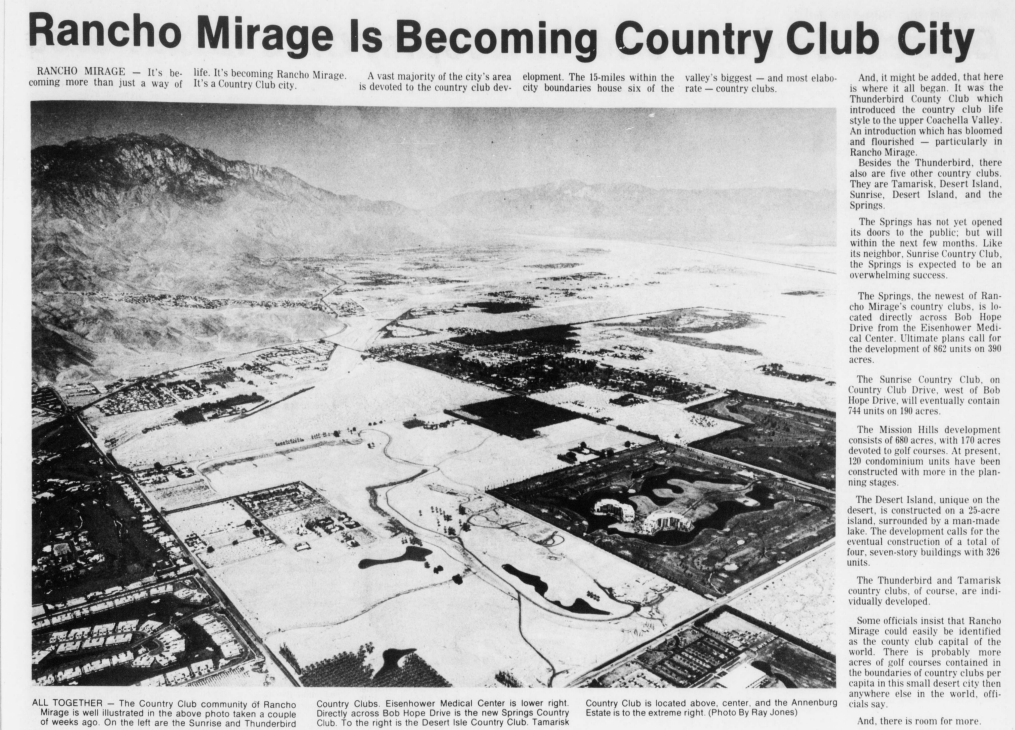
Rancho Mirage had just celebrated its first birthday when The Desert Sun, in an October 1974 headline, declared the Coachella Valley community was becoming a “country club city.”
Several new clubs, such as The Springs, were under development at the time, adding to the two — Thunderbird and Tamarisk — that opened a few decades earlier. The growth had some local officials saying “that Rancho Mirage could easily be identified as the county club capital of the world,” the article said.
It added: “There is probably more acres of golf courses contained in the boundaries of country clubs per capita in this small desert city than anywhere else in the world, officials say. And there is room for more.”
Of course, Rancho Mirage didn’t bloom over the course of a single year. Long before it was a city, the 1950s marked a transformative period for the nascent community, with the start of the Thunderbird and Tamarisk country clubs. For centuries before then, the area was traversed by members of the Agua Caliente band of the Cahuilla Indians, and the tribe’s reservation still includes a few parcels in the city.
The city of Rancho Mirage — celebrating its 50th anniversary this year — has long attracted celebrities and presidents, and it still does, albeit in more discreet fashion than half a century ago. Its population still largely skews white and wealthy, with a median household income approaching $100,000, and half its residents are over 65.
But the days of running into the president's wife at a local supermarket are likely over.
So, just how much has Rancho Mirage changed over the years? As the city prepares several events in the coming months to celebrate its 50th anniversary of incorporation, The Desert Sun spoke with residents and took a look at how the famous “playground of the presidents” came to be.
Getting on the map
In 1942, the area that would soon become Thunderbird Country Club — the valley’s first 18-hole golf course and an influential model for resorts nationwide — was “nothing more than an onion patch” on a local couple’s ranch, as one report from The Desert Sun described it.
The land changed hands, and after a brief stint as a dude ranch, the country club opened in 1951, in part thanks to Johnny Dawson, an accomplished amateur golfer. Even as the sport was starting to take off in nearby Palm Springs, Dawson put together an investment group to build the valley’s first 18-hole golf course at Thunderbird.
His idea was met with some skepticism. At the time, the land that would become Rancho Mirage was little more than sprawling desert and occasional farmland between Palm Springs and Indio, with only a few ranches and small homes built there in the 1920s and 1930s.
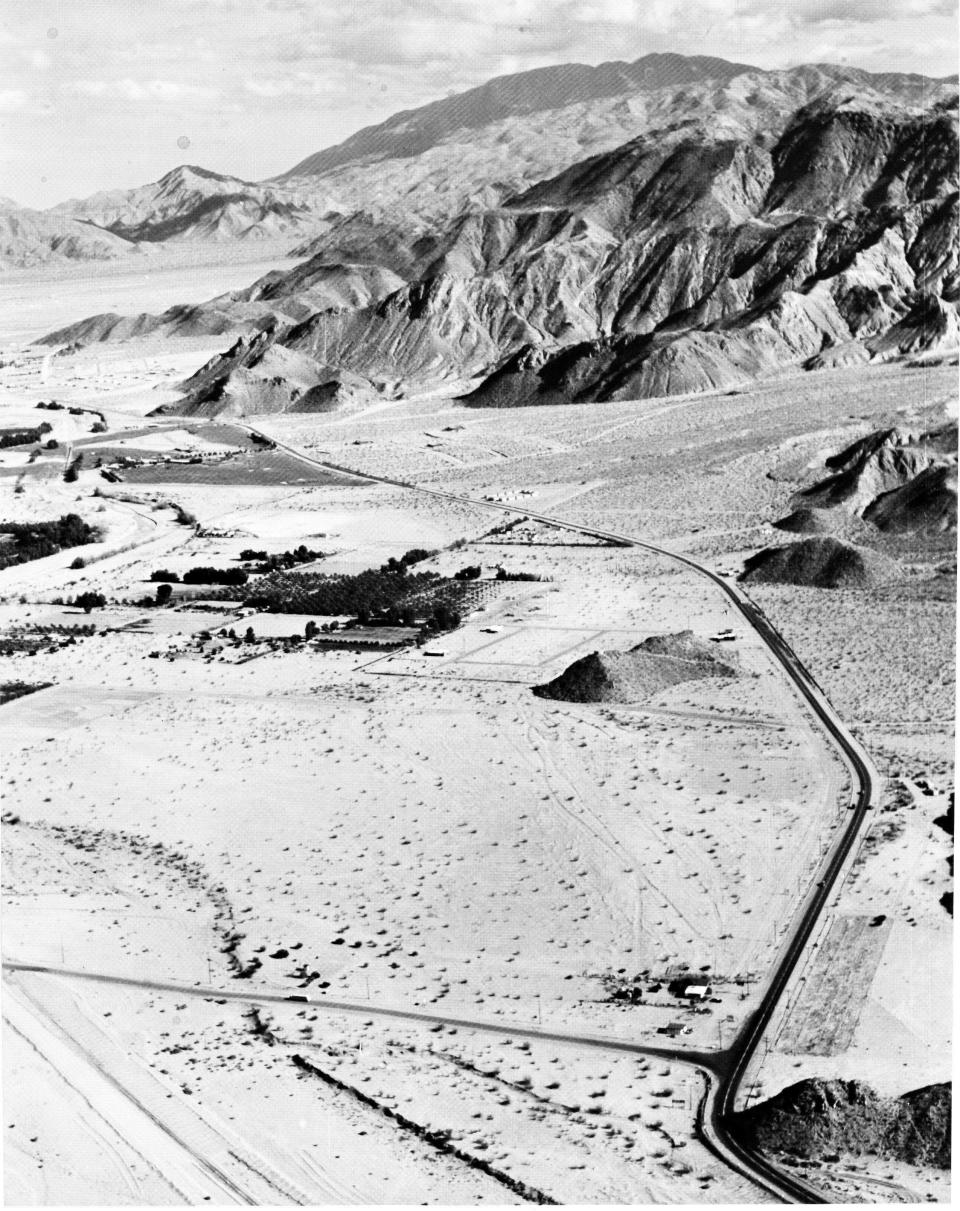
But Dawson’s vision quickly paid off, as the club’s early investors featured many entertainment celebrities, including Bob Hope, Bing Crosby, Lucille Ball, Desi Arnaz and Phil Harris. The club opened in 1951, and dozens of homes and cottages were built there in subsequent years.
The discreet enclave was not just attracting Hollywood performers. Many industrial titans — the heads of Ford Motor Company, Oscar Mayer, Firestone Tire & Rubber Co., Swanson Foods and more — became members at Thunderbird in its early years.
“I think there was a certain economic strata that (the members) all sort of were in,” said Karen Reynolds, who leads the Thunderbird club’s history committee and whose grandfather was an early member. “They were all mixing together one way or another politically or financially, because of their wealth.”
Beyond its significance as the valley’s first 18-hole course, Thunderbird Country Club was among the first clubs that sold home lots right next to the golf course. (The club also lays claim to being the first to develop the motorized golf cart, though some people in Florida likely dispute that.)
Within a year of Thunderbird’s opening, in 1952, another country club — Tamarisk — had opened just a couple miles away. Its developers’ ties to the Hollywood industry, as well as a popular L.A. country club, brought in founding members that included entertainers such as the Marx brothers, as well as high-profile businessmen and entrepreneurs from San Fransisco.
The two clubs developed in parallel largely due to the era’s social divides. Thunderbird, like other clubs already in Palm Springs and nationwide, was “restricted” to not allow Jewish people among its membership. Even one of the first real estate ads for the Rancho Mirage area, in 1937, noted the early-stage development was “restricted.”
“There's a lot of that history in this area,” Melissa Riche, the founder of Preservation Mirage and author of “Mod Mirage,” said in an interview. “It was the same as everywhere.”
Tamarisk effectively served as the country club for the Jewish community that came from the L.A. area and elsewhere, though the historical record is unclear on other racial barriers. Sammy Davis Jr., a Black musician, was a member at Tamarisk, but both clubs were overwhelmingly white.
While its golf course was an instant hit, homebuilding at Tamarisk took off, in part, with the arrival of world-famous singer Frank Sinatra — then in the midst of a career revival — in 1954. While already established in Palm Springs circles, Sinatra moved to Rancho Mirage, like many of his ilk, for its added privacy.
“Rancho Mirage, quite early on, became a sort of exclusive, quieter area of the desert,” Riche said. “When Frank Sinatra left Palm Springs in 1954 and moved to Tamarisk Country Club, he was breaking up with Ava Gardner at the time. Even back then, there was a lot of people who knew where he lived, and he kind of wanted to get away from all of that.”
Within just a few years, many others — including others who lived in the White House — would be drawn to the retreat-style living Rancho Mirage offered.
Finding community in the ‘playground of the presidents’
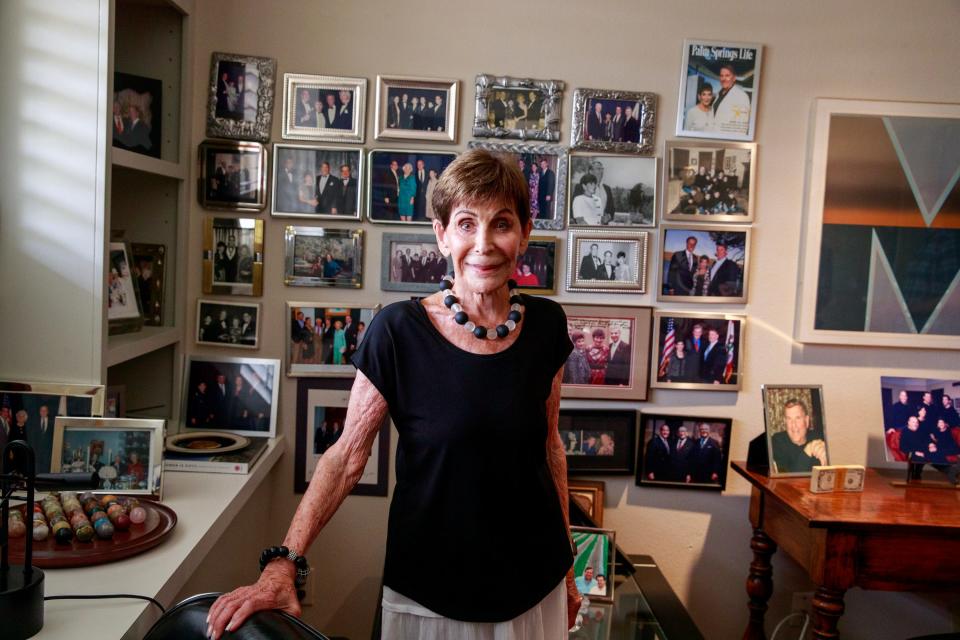
Ardith Marguleas didn’t know a soul in Rancho Mirage when she moved there with her husband, Howard, in 1958 shortly after their marriage.
“There wasn't that much of a community,” Marguleas recalled. “I remember there was a once-a-month women's club my neighbor belonged to. There was a Safeway, there was Alberto's. There weren’t many restaurants. We had to go into Palm Springs to go to restaurants.”
“It wasn’t an area you could walk around – well, it still isn’t really,” she added. “But it was a lot of desert, a lot of flooding on Country Club (Drive), on Sinatra, on Monterey, when the rains came.”
The desert landscape was also unfamiliar to Marguleas at first, coming from the San Francisco area. Her husband worked in agriculture, and Ardith frequently joined him on trips over to Thermal to check on their crops of grapes, citrus, strawberries and more.
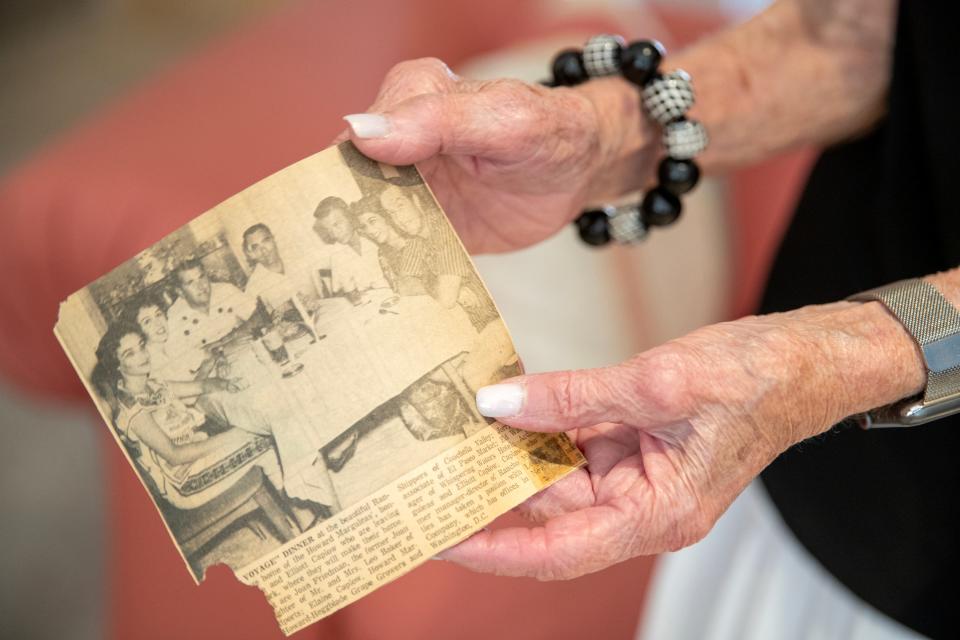
They chose Rancho Mirage in part due to its location between Palm Springs and his farmland in the east valley, initially living in a place on Tangier Road.
In those days, one might bump into a celebrity anywhere: Marguleas recalled being "in awe" when she saw then-First Lady Mamie Eisenhower shopping at the local Safeway, with her security detail in tow. The first lady became a frequent visitor — and later, an Indian Wells resident — after President Dwight Eisenhower played a round of golf at Tamarisk and fell in love with the area in 1954.
Eisenhower’s 1954 visit was followed the next year by Thunderbird hosting some of the world’s best golfers in the Ryder Cup. The events, amplified by burgeoning mass media and television, helped put Rancho Mirage on the map.
“You had the perfect storm of people going, ‘Hey, that looks like somewhere I ought to be. Look at all those incredibly swanky people having a good time in the sun, look at these mountain views. I want a piece of that,’” Riche said. “It was that kind of perfect confluence of things that happened all at the same time that made it so alluring.”
Within a few years, several presidents — Kennedy staying with Bing Crosby and other friends, Nixon often staying with Walter and Leonore Annenberg at their estate — had visited, giving birth to the “playground of the presidents” moniker for Rancho Mirage.
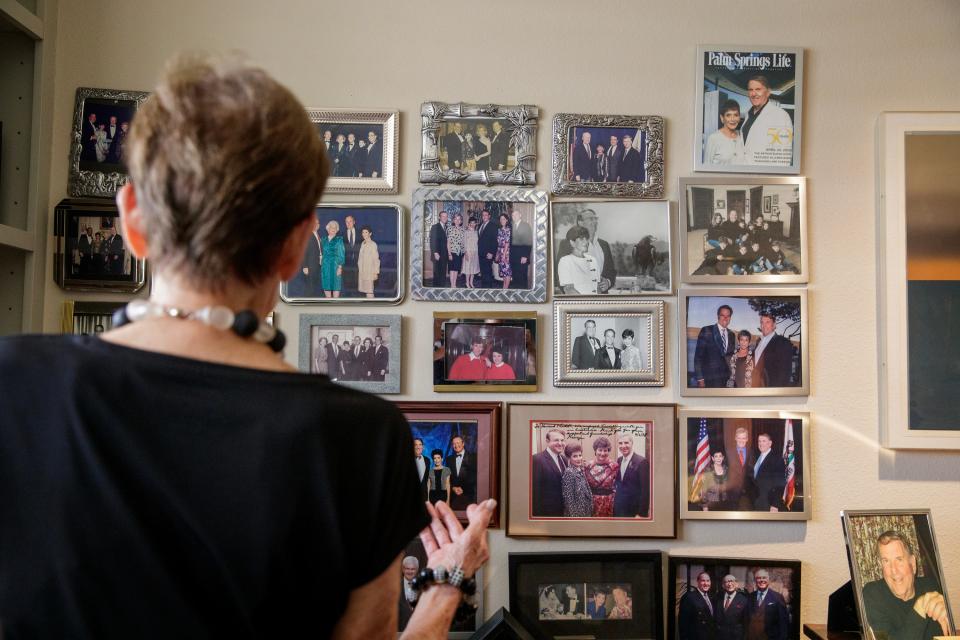
But for full-time residents, the community was still finding its way in those early years. While raising her children, Marguleas joined several community groups that connected her with friends, as well as movers and shakers. Her late husband, Howard, was also an innovative figure in agriculture, growing California’s first mangoes in the desert and bringing pineapple to the U.S. mainland. (He died six years ago.)
Howard's high profile in agriculture led them to some major political connections, many of whom he was eager to take out to the eastern Coachella Valley to see the rows of crops. Ardith said her husband loved to show off the newest crops to his visitors, and their ties to the Fords even led them to a dinner at the White House at one point.
Asked if she ever imagined herself dining with presidents as a kid, Ardith laughed: “No way.” But it wasn’t something she dwelled on, either.
“I guess I just took it in my stride,” she said. "It's wonderful what it has become."
City formed amid valley-wide incorporation push
By the late 1960s, as Rancho Mirage had grown to include about 500 year-round residents, the question of how the Coachella Valley's budding communities would incorporate was a hot topic.
From an early stage, Rancho Mirage was envisioned as a quiet enclave. W.J. Rawitzer, who led the community’s incorporation committee, told the local chamber of commerce in May 1972 that they were “trying for a city patterned after Indian Wells,” which had incorporated a few years earlier.
Alternate versions of history abound when looking at the valley's incorporation process. The Rancho Mirage community had nearly been included as part of Palm Desert in 1970 during that community’s vote on incorporation, but the effort failed.
In late 1972, the leader of a citizens group in Cathedral City pitched one collective city between Rancho Mirage, Palm Desert and Cathedral City, saying the tri-city model would be more cost effective. But that idea did not gain traction in either area.
Even after fending off those efforts, Rancho Mirage needed to resolve a turf war with Palm Desert in the midst of its own incorporation process. (The Desert Sun went as far as to call it a “rivalry” between the two communities.) Both communities proposed city boundaries that included Eisenhower Medical Center, then under construction after Bob and Dolores Hope donated the land. Rancho Mirage eventually won out.
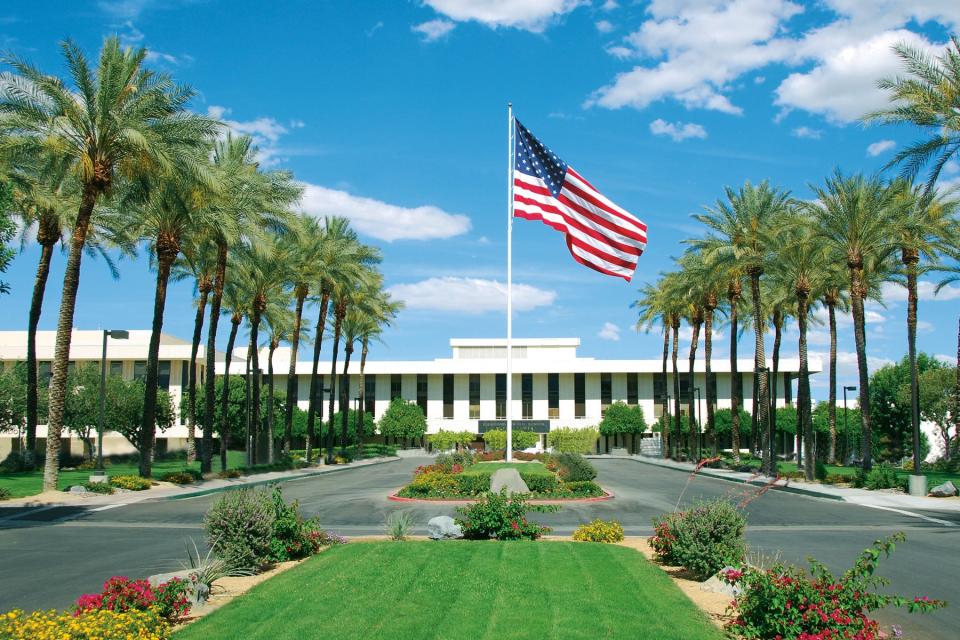
The community’s residents ultimately voted to incorporate in a landslide, with more than 85% in favor, and the city of Rancho Mirage officially incorporated on Aug. 3, 1973. After leading the incorporation committee, Rawitzer was the first mayor.
The subsequent years saw a “building boom” in the young city, according to a 2003 historic resource survey commissioned by the city. By 1979, Rancho Mirage’s population was over 7,300 — more than 10 times what it was a decade earlier.
Today, it's 17,000.
Eisenhower Medical Center opened to much fanfare in 1971, with then-President Nixon and then-Gov. Ronald Reagan among those in attendance.
Today, the hospital is by far the city’s largest employer, with approximately 2,480 workers. The second-largest employer is the Agua Caliente Resort & Casino, while several hotels also have hundreds of workers, underscoring how tourism remains a primary economic driver for the city.
The ‘Camp David of the West’
Perhaps the city’s most famous resident, former President Gerald Ford, moved with his wife Betty into a new home at Thunderbird in 1978. They quickly got involved with local affairs, as the former first lady founded the world-renowned Betty Ford Center for drug and alcohol treatment in 1982.
Before Ford moved here, Rancho Mirage was well known in national political circles, in large part thanks to Sunnylands, the large estate developed by the Annenbergs. The 200-acre estate includes a nine-hole golf course and several sculptures, as well as an immaculate house that featured the works of Pablo Picasso and Vincent Van Gogh, among other famous painters.
Sometimes referred to as the “Camp David of the West,” Sunnylands has hosted eight presidents, as well as foreign nobility and diplomats, for parties and state dinners. Reagan celebrated New Year’s Eve at the estate more than a dozen times — "You've made it hard for us to go back to the universe," he once wrote in the guest book — and Barack Obama used the site to meet with several foreign diplomats during his presidency.
What will the next 50 years look like?
After its building boom in the 1970s, Rancho Mirage continued to add new hotels, luxury car dealerships and shops, as well as a state-of-the-art library and observatory.
But now, the city barely has any vacant land left, nearly all of it covered with homes, golf courses, hotels and restaurants.
“We've run out of land,” said Cass Graff-Radford, a real estate agent who’s worked in the area for several decades.
One large exception, however, is Cotino, a development off Bob Hope Drive that includes Disney as a lead partner. The massive 618-acre vacant site is being developed to eventually include more than 1,700 homes, along with a swimmable “grand oasis” lagoon and a resort hotel and clubhouse.
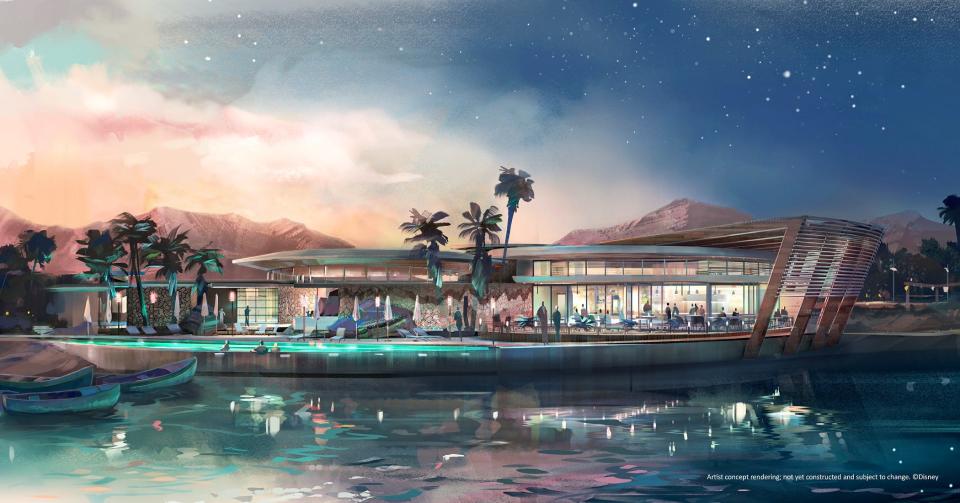
The development will bring new residents as the city has seen its population stagnate — and even shrink — in recent years. Between 2010 and 2020, Rancho Mirage was one of just two valley cities, along with Indian Wells, to lose people (219 residents) over that period, per Census data. The latest Census estimates for 2022 show the city has since gained back about 600 residents.
The share of Rancho Mirage’s population over the age of 65 has also gradually crept up in recent decades, from 43% in 2000 to half in 2020, per census data.
Charles Townsend, who served two terms as mayor during his eight years on city council, said he thinks Cotino can play a role in adding more housing for families, though he also noted the long-term challenge of keeping young people here.
“The issue that I hear from younger people who have married and had their children here, and their children are 18, 19, 20 (years old), they go, because there's not that much for them here as far as being a part of a big business or forming a career,” Townsend said in an interview.
Townsend was optimistic that more industries will come to the area, noting the high cost of living in Silicon Valley and pointing to lithium development at the Salton Sea as potential drivers for new technology sectors.
With the land available for further development in Rancho Mirage drying up, home values have also shot up recently in the city. Graff-Radford said she’s seen homes that would have cost about $2 million only a couple of years ago listed for upwards of $4 million now.
“It costs a lot of money to live here year-round,” Graff-Radford said. “That's made it very exclusive.”
The city still counts some high-profile politicians, such as former U.S. Sen. Barbara Boxer, and wealthy businesspeople among its residents. Last year, billionaire Larry Ellison opened his new high-tech wellness resort, known as Sensei, at his property in Rancho Mirage.
But celebrities today keep a lower profile than the likes of Sinatra back in the day. Townsend said he’s noticed a regional trend, in which the valley’s celebrities aren’t as connected with city halls as they once were.
“I think moneyed people today are more quiet with their money, because Rancho Mirage has not only many millionaires, but many billionaires,” Townsend said. “These people today are very low-key in their relations with not only Rancho Mirage, but within the other (valley cities) as I see it.”
While its wealthier residents now move largely outside of the public eye, Rancho Mirage still has the allure of its country clubs, drawing Obama to Thunderbird Country Club several times in recent years. Now an honorary club member, Obama's frequent visits suggest the city's biggest draw is not going anywhere.
“Every city grows up around some form of economy or geography, whether it's the California gold rush in San Francisco, or stockyards in Fort Worth, or oil and gas in Houston,” Riche said. “There's always some kind of economic motivation for a city to grow.”
“In the case of Rancho Mirage, it was two country clubs the city grew up around,” she added. “Golf and country club living were the reason that Rancho Mirage exists.”
Ramon Salado Romo contributed to this report. Ramon is a Stanford Rebele Journalism intern working for the Desert Sun this summer. He can be reached at rsaladoromo@palmspri.gannett.com.
Tom Coulter covers the cities of Palm Desert, La Quinta, Rancho Mirage and Indian Wells. Reach him at thomas.coulter@desertsun.com.
This article originally appeared on Palm Springs Desert Sun: Rancho Mirage is celebrating its 50th anniversary. Read how it began

